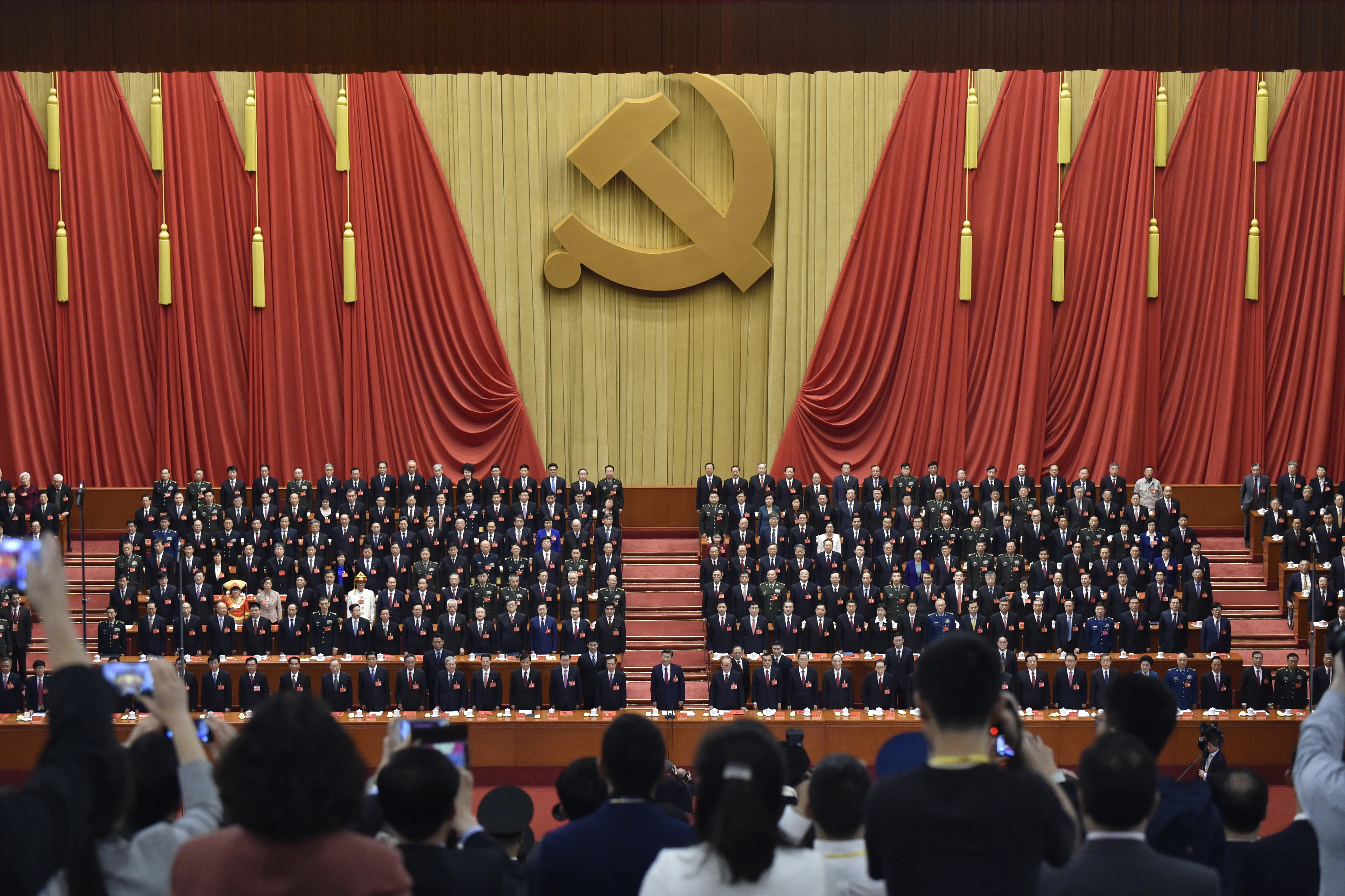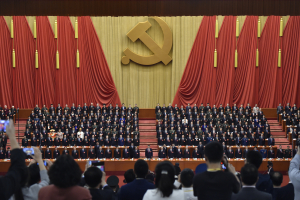
- Policy Research
- Economy, Fiscal Policy, Environment, Resources, Energy
The Repercussions of a Global, Digital Renminbi
June 28, 2023
P-2022-002E
In this summary of a report on the prospects for the renminbi’s internalization and digitization, the authors point to the importance of enhancing Japan-China cooperation to prevent rising tensions from causing losses on both sides.
* * *

In the realm of global finance, currencies hold immense power. They serve as units of account, mediums of exchange, and stores of value. The internationalization of a currency signifies the enhancement of these functions in international transactions and finance. It can bestow the issuing country with the ability to better preserve the value of its wealth and manage exchange rate risks, providing a competitive edge in global trade. However, this transformative process comes at a cost: maintaining a currency’s international status demands significant resources and efforts.
What are the prerequisites for a currency’s internationalization? Trust plays a vital role. A currency must earn the confidence of the international community, which requires that a country have a large economy marked by free trade and open financial markets. Embracing openness, though, entails certain risks. This can be a delicate balancing act for any nation.
This Research Policy report (full report in Japanese only) issued by the authors analyzes the strategic goals, feasibility, and implications of China’s attempts to internationalize the renminbi. China has grappled with a shortage of foreign currency for many years. Until 1994, it operated a de facto two-currency system, with foreign citizens being required to use foreign exchange certificates (FECs), instead of renminbi. The aim was to create a centralized exchange system and restrict the flow of foreign currency to individuals. The tide began to turn in the 1990s as China’s trade surplus expanded, alleviating the currency shortage. Beijing thus abolished the FECs in 1994, opening the door for foreigners to use the renminbi to make purchases. Two years later, in 1996, China declared that its current international transactions were free of restrictions and would refrain from multiple currency practices, securing its place as an IMF Article VIII country.
China’s accession to the World Trade Organization in 2001 unleashed a wave of economic growth. Foreign companies, particularly multinational corporations, flocked to China to capitalize on its abundant, inexpensive labor, and this also spurred the rapid development of service industries like logistics. Industrial clusters of machinery and electronics companies sprouted along the southern coastal areas, transforming the country into the world’s factory. The economic upswing stoked the flames of the renminbi’s internationalization within China.
China is the world’s second-largest economy today, but in 1994, when FECs were abolished, its share of global GDP stood at a mere 2%. By 2021, its share had jumped to 18.1%, with the United States and Japan accounting for 23.9% and 5.1%, respectively. China’s desire to internationalize its currency is the result of this robust economic growth. But a large economy alone is not enough for the world to embrace the renminbi as an international currency. China must also open its financial markets, strengthen its legal system, and ensure transparent and effective governance.
Moves toward Digitization
The other major global transformation of the late 1990s was the rise of information technology. The origins of many of China’s biggest tech companies today go back to the 1990s, when Chinese students learned about the internet while attending universities in the United States and looked for ways to develop the technology’s potential back home. About a decade later, companies like Alibaba, Tencent, and Baidu were launched, spearheading China’s revolution in e-commerce, social networking, and online searches. By 2021, China had surpassed 1 billion internet users and boasted an internet penetration rate of 74.4%. Web-based mobile payments flourished, with Alibaba’s Alipay and Tencent’s WeChat Pay emerging as dominant tools for digital transactions and offering unparalleled convenience and a sense of greater security (since counterfeit bills were in wide circulation).
For the digital renminbi (e-CNY) to make inroads in China today, though, consumers must be persuaded to use it in favor of mobile payments. This will be a high hurdle to clear, since mobile payments already offer many of the conveniences of a digital currency, allowing consumers to receive their salaries, deposit savings, and manage day-to-day transactions; they will not feel the need to use both.
Despite their similarities, mobile payment services and a digital currency are not the same, a fact that is not well understood. Research is also lacking on the impact the introduction of a digital currency will have on credit creation, financial intermediation, and monetary policy. Even the most economically developed countries are not yet fully prepared—in terms of both infrastructure and technology—to accommodate a digital currency. There are lingering concerns regarding system security and potential complications in data management. That said, there is no denying that digital currencies are poised to play a bigger role in the coming years, raising questions not only about which currencies will come to dominate the global economy but also about efforts to establish international standards. And we should note that China has shown great interest in becoming actively engaged in such efforts.
Closer Japan-China Financial Cooperation
Given the close, mutual dependence of the Japanese and Chinese economies, bolstering financial cooperation would appear to be imperative. But given the Japanese public’s growing mistrust of China, any proposal for closer bilateral cooperation is likely to provoke a backlash and countered with a call, instead, for greater vigilance. The aim of our research program, though, is not to pander to such shifting public opinion but to scrutinize the steps Beijing is actually taking to internationalize and digitize its currency.
The reason financial cooperation is crucial for Japan, as many experts have pointed out, is that it would benefit the Japanese companies—including financial institutions—operating in China. Even before the outbreak of COVID-19, the Japanese government and financial industry had expressed keen interest in tapping China’s immense growth potential to invigorate Japan’s economy, beset by a declining birthrate and aging population. A Japanese institution that gains designation as a renminbi clearing bank, for example, would be in a position to serve as a renminbi settlement center.
Effort would be needed in both the public and private sectors for closer cooperation to produce concrete results; bilateral ties, though, have cooled significantly since the pandemic. Many people in Japan express security concerns about engaging more closely with its biggest trading partner, and economic dialogue has slowed to a trickle. Those directly involved in bilateral trade may feel a strong need for economic cooperation, but this has clearly taken a backseat as a policy priority.
Any further deterioration in the relationship would benefit neither side. To prevent such a scenario, the first step should be to clarify the rules of economic cooperation, including financial cooperation.
Implications for Japan
Our research program has closely monitored the institutional steps being taken to the turn the renminbi into an international and digital currency and kept an eye on related policy measures being implemented by Beijing. Our conclusion is that neither internationalization nor digitization will come easy, but progress will continue to be made—even if slow—as long as China’s economy continues to grow.
Internationalizing the currency of the world’s second-largest economy is not, in itself, a bad idea, but it will likely not happen without greater transparency in the exchange rate mechanism and without fuller convertibility. There are also technical hurdles to clear, such as the need to enhance security regarding personal information. As for digitization, people will continue to rely on their smartphones and other mobile devices to conduct their retail transactions and store their savings unless the digital renminbi can offer clear advantages.
What do these trends mean for Japan? There is room, we believe, to leverage the yen’s international presence as a hard currency to boost its usefulness as a currency of settlement and as a reserve currency. As a mature, industrialized country with a declining birthrate and an aging population, Japan would do better to focus on enhancing the quality of economic growth, rather than pursuing quantitative expansion.
China is Japan’s largest trading partner, and it also makes use of the goods and services provided by Japanese companies operating in its market to drive its exports. Closer financial and monetary cooperation between the two countries would stabilize bilateral trade and financial transactions and would thus result in benefits for both sides.
Japan, too, has been contemplating and experimenting with the introduction of a digital currency, an effort led by the Bank of Japan. And like China, it faces technical and institutional challenges. There is no question that the role and use of cash will decline in the coming years, but that does not mean that a central bank digital currency (CBDC) will automatically emerge as a replacement.
The experimental use of e-CNY in China has been slow to gain traction, for example. But it still has a clear advantage over a digital yen. Mobile payment platforms like Alipay are already in wide use in Cambodia and other Southeast Asian countries that are economically dependent on China. It would thus not be farfetched for the digital renminbi to begin circulating in these countries as well in the not-too-distant future.
That said, the digital renminbi does not as yet pose a major a threat to the dollar, euro, and yen as the currencies of choice for international settlements and foreign exchange reserves. Given the growing strains in US-China ties, moreover, the financial authorities of Japan, the United States, and Europe will likely push for closer coordination and cooperation in addressing such issues as developing country debt servicing and CBDCs. Such efforts may be pragmatic, yet, if handled poorly, they also run the risk of further alienating China. They should not seek to exclude China but, by keeping the door open to financial cooperation, to prod Beijing to adhere to existing international rules.














![[Policy Research] Water Minfra: A New Strategy for Water-Centric Social Infrastructure](/files_thumbnail/research_2023_Oki_PG_Mizuminhura_png_w300px_h180px.png)











































